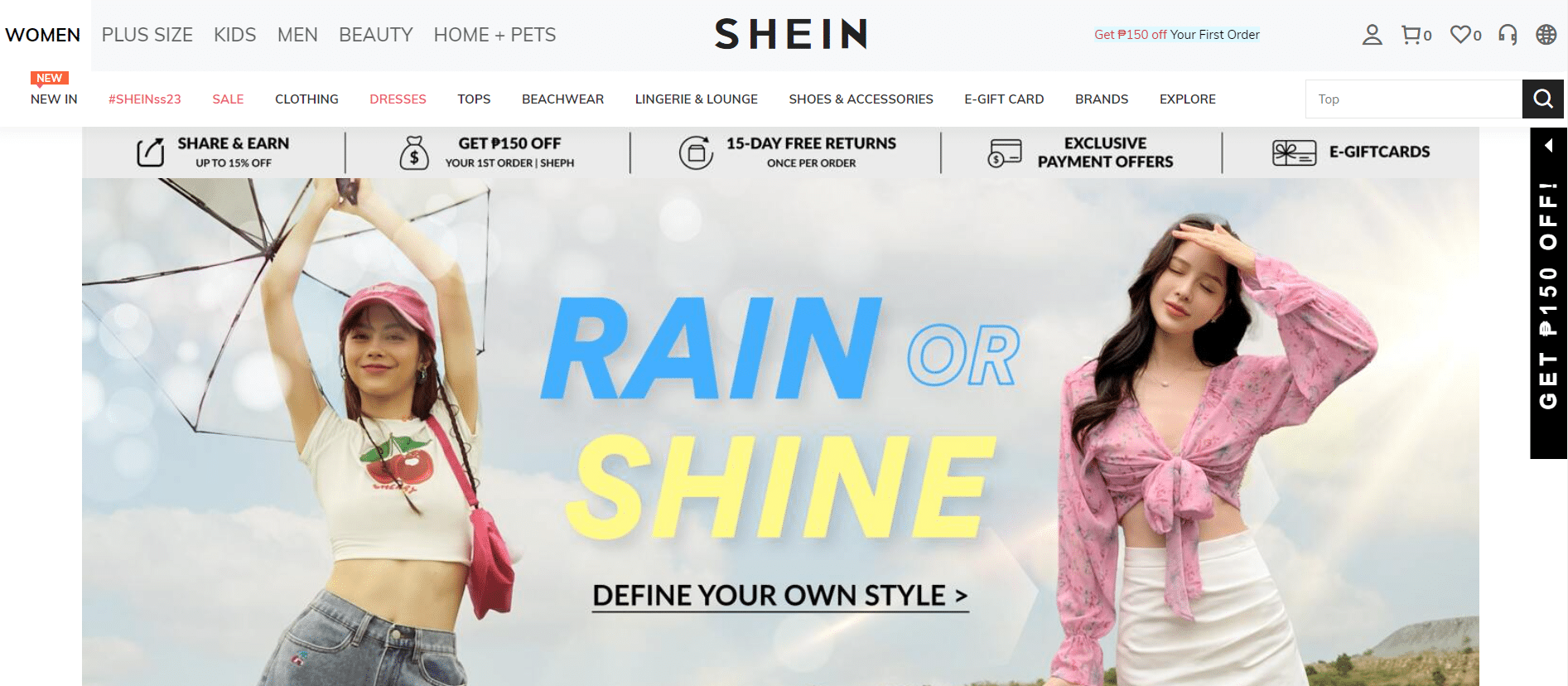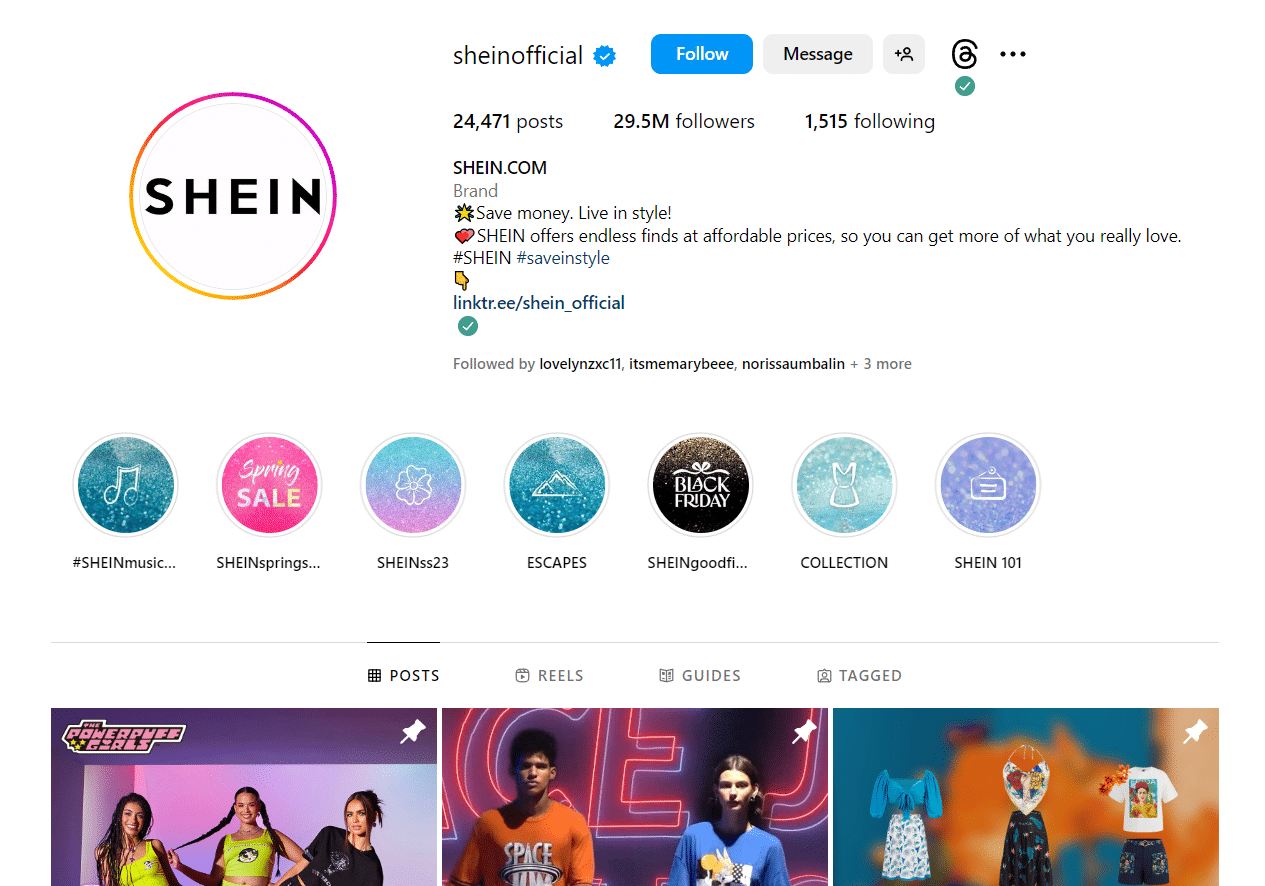Shein: The Good, The Bad, The Controversial

SHEIN has emerged as one of the most popular online fashion retailers, known for its affordable and trendy clothing options. In this article, we delve into the origins of SHEIN, its business model, and the factors contributing to its success. We also address concerns surrounding the company's sustainability practices and some of the bigger controversies it has faced in recent years.
But first of all, what is SHEIN?
The New Kid On the Block
SHEIN is an international fast-fashion e-commerce platform that offers a wide range of clothing, accessories, and beauty products. The company was founded in 2008 by Chris Xu and is headquartered in China.
From first glance, SHEIN oozes style and appeal.
Originally named SheInside and exclusively selling wedding dresses, a 2015 business shift prompted a rebranding as SHEIN, pronounced “she-in”. Over the years, SHEIN has gained immense popularity, attracting a global customer base, particularly among young consumers. With a vast selection of trendy and affordable items, SHEIN has positioned itself as a go-to destination for fashion enthusiasts. However, it wasn’t until 2020 that SHEIN experienced its breakthrough year when the global COVID-19 pandemic and the resulting quarantines boosted e-commerce sales.
SHEIN has witnessed significant growth since its inception, with reports indicating that it achieved annual revenue of over $10 billion in 2020. The company's rapid expansion and ability to adapt to changing fashion trends have contributed to its success.
A Look Into SHEIN’s Operations
A lot of people might wonder how SHEIN works. We’re here to help with that. SHEIN operates as an online retailer, utilizing an e-commerce platform to showcase its vast product range. Customers can browse through various categories, such as women's clothing, men's clothing, accessories, and beauty products. The website's user-friendly interface, coupled with competitive pricing, attracts shoppers seeking affordable fashion items. SHEIN ships its products worldwide, offering convenient delivery options to customers in different regions.
The average SHEIN shopper is, unsurprisingly, women. To be a bit more accurate, the average SHEIN shopper earns $65,300 in annual income, spends at least $100 per month on women's clothing, and looks for value and comfort over being fashion-chic. Some of the average SHEIN shopper’s preferred brands are Amazon, Walmart, Target, and T.J. Maxx.
Need for (Fashion) Speed
SHEIN has swiftly risen to prominence in the fashion industry, capturing the attention of fashion enthusiasts with its fast fashion business model. By capitalizing on quick production and rapid turnaround times, SHEIN meets the demand for trendy clothing at affordable prices. With a focus on affordable prices, SHEIN captured the attention of young consumers seeking trendy clothing options. Its ability to swiftly bring new designs to market has created a sense of urgency and novelty among its customer base, super fueling its growth.
The Power of Social Media
SHEIN’s success can also be attributed, in part, to its effective use of social media marketing. By collaborating with influencers and leveraging platforms like Instagram, TikTok, and YouTube, SHEIN has created a strong online presence and built a loyal community of followers. Influencers showcase SHEIN’s products, providing style inspiration and creating a sense of aspiration around the brand. This social media influence has significantly contributed to SHEIN’s popularity among its target audience.
Always with a finger on the pulse, SHEIN makes sure that all its social media pages share the same freshness of style.
Price is King
Another of the key factors in Shein's success is its ability to offer competitive prices. By sourcing products directly from manufacturers, Shein eliminates the middleman and optimizes its supply chain, allowing the company to keep prices low. This affordability factor appeals to budget-conscious shoppers who want fashionable items without breaking the bank or depleting their wallets. Shein's pricing strategy has positioned it as a go-to destination for affordable fashion, particularly among young consumers.
Despite all these wins, SHEIN does not remain unscathed and untouched by the usual problems that plague large e-commerce businesses.
A Not-so Green Footprint
Fast fashion, as an industry, is known for its negative environmental impact. SHEIN’s rapid production and global shipping contribute massively to its carbon footprint. However, the company has recognized the importance of addressing sustainability issues and has taken some steps to mitigate its impact.
SHEIN has implemented sustainability initiatives, including recycling programs and the use of eco-friendly packaging. The company claims to limit excess inventory and reduce waste through its digital supply chain, avoiding the accumulation of unsold products. Additionally, Shein employs digital printing methods that require less water consumption compared to traditional printing techniques. These are some measures that demonstrate Shein's commitment to improving its sustainability practices.
Negative Influenc(er)
In July 2023, Shein faced backlash for flying US influencers to China for a lavish trip. This raised concerns about the environmental impact of such practices and the company's earlier commitment to sustainability. Critics argued that the extravagant trips blatantly contradicted Shein's sustainability claims. The incident sheds light on the need for transparency and responsible practices within influencer marketing campaigns.
Recent Labor Concerns
SHEIN has also faced its fair share of controversies regarding labor concerns. Reports have highlighted issues such as low wages, long working hours, and a lack of transparency in supplier relationships. For example, a 2021 investigation into SHEIN’s partner-manufacturers shows that they often subcontract orders to small workshops inside rundown buildings to cut costs. These concerns underscore the importance of ethical sourcing and labor standards in the fashion industry.
Conclusion
SHEIN has revolutionized the fast fashion industry, becoming a global fashion powerhouse through its online platform and affordable clothing options. However, the company faces sustainability challenges, particularly regarding its carbon footprint and labor concerns. As SHEIN continues to grow and evolve, it must address these issues and take concrete steps toward sustainability and ethical practices. By embracing transparency, responsible sourcing, and promoting labor rights, SHEIN can work towards a more sustainable and socially responsible future in the fashion industry.





